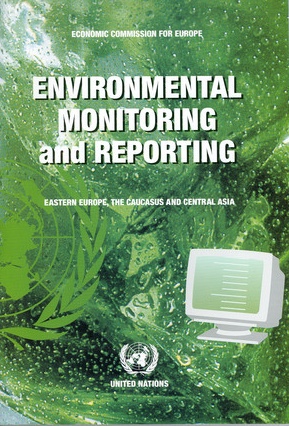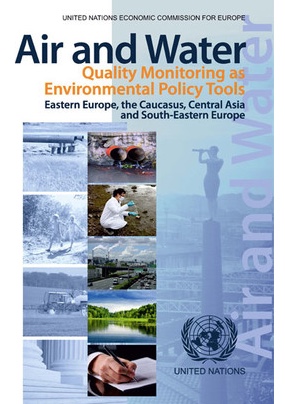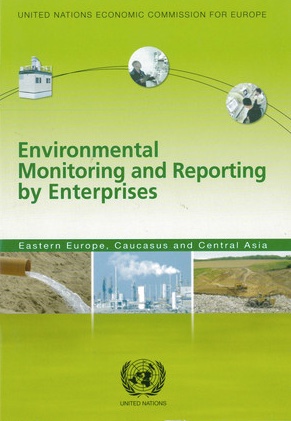Introduction

Environmental monitoring is a tool to assess environmental conditions and trends, support policy development and its implementation, and develop information for reporting to national policymakers, international forums and the public.
Over the past decade, only a few countries of Europe and Central Asia have been able to maintain existing monitoring activities. The monitoring of urban air pollution — an important human health risk — is poor in many cities of the subregion. Solid and hazardous waste monitoring is weak and industrial emissions are also not well monitored, reducing the effectiveness of policy instruments such as emissions charges and fines. Monitoring of transboundary air pollution also needs strengthening. Moreover, many European and Central Asian countries lack uniform national methodologies across different monitoring areas, and their classification systems are often incompatible with international standards.
At the Fifth Environment for Europe Conference (Kyiv, 2003), UNECE Ministers endorsed recommendations for strengthening environmental monitoring and information systems in European and Central Asian countries prepared by the UNECE Working Group on Environmental Monitoring. Ministers also endorsed the UNECE guidelines for the preparation of national state-of-the environment reports. Together, these documents provide a road map for strengthening monitoring and reporting in the European and Central Asian subregion.
More information on environmental monitoring and reporting can be found here.
Air Monitoring
Air pollutants are known for their adverse effects on human health and ecosystems. Some of these pollutants also erode technical infrastructure and cultural monuments. Emissions of nitrogen oxides and non-methane volatile organic compounds are the main causes of the formation of ground-level ozone, which has adverse effects on human health and ecosystems. The air pollutants indicator assesses pressures from specific pollutants on atmospheric air across individual countries, but also identifies pressures from particular national sectors like energy, transport, industrial processes, agriculture and waste management.
On the basis of this indicator, public authorities can adjust the national environmental policy by, for instance, revising emission standards and emission limit values, strengthening permitting of potentially polluting activities and improving the application of economic instruments. Information on pollutant emissions is necessary for the assessment of transboundary air pollution and for international cooperation to address this problem.A detailed indicator-based report can be found here.

Water Monitoring
Renewable freshwater resources have major environmental and economic value. Their distribution varies widely among and within countries. Pressures on freshwater resources are exerted by overexploitation and by pollution. Relating resources abstraction to renewal of stocks is a central issue in sustainable freshwater resource management. If a significant share of a country's water comes from transboundary rivers, tensions between countries can arise, especially if water availability in the upstream country is greater than in the downstream one. Countries are quite interdependent with regard to water resources.
The Convention on the Protection and Use of Transboundary Watercourses and International Lakes requires that the Parties introduce sustainable water management, including an ecosystem approach and the rational and fair use of transboundary waters.
A full report on air and water monitoring is available here.
Biodiversity

Sustainable development depends on a sound environment, which in turn depends on ecosystem diversity. Protected areas, especially the full range of International Union for Conservation of Nature (IUCN) Protected Area Categories, are essential for conserving biodiversity and contributing to sustainable development.
The biodiversity indicator provides a means to measure the response to the degradation of ecosystems and the loss of biodiversity in a country. It demonstrates the extent to which areas important for conserving biodiversity, cultural heritage, scientific research, recreation, natural resource maintenance and other environmental values are protected from incompatible uses.
A full report is available here.Waste Monitoring
Waste represents a considerable loss of resources in the form of materials and energy. The treatment and disposal of waste may cause environmental pollution and expose humans to harmful substances and infectious organisms. Waste generation is closely linked to the level of economic activity in a country, and reflects the society's production and consumption patterns. A reduction in the volume of waste generated is therefore an indication of an economy's move towards less material-intensive production and consumption patterns.
The main purpose of the waste indicator is to measure the pressure on the environment of the total amount of generated waste and waste by category. The waste intensity represents a driving force indicator and shows response to anthropogenic activities.Remote Sensing
Remote sensing can play an important role in monitoring and reporting on environmental problems, in particular when the target of such observations is to assess pollutant effects at large space scales over long time periods — i.e., at the regional, continental or even global scale over the entire seasonal cycle for a number of years.
Remote sensing can provide complementary information to existing ground-based environmental monitoring systems. It can be used to meet the need for timely information and can provide synoptic cross-boundary information. Data and information obtained through Earth observation can be used within geographic information systems for overlay and comparison with other geo-referenced information.
Enterprise Monitoring

Enterprise environmental monitoring and reporting is the system of measures implemented and paid for by operators, the natural or legal persons exercising actual power over the technical functioning of the facility. Such a system includes continuous and periodic observations, the recording, storage and treatment of data relating to environmental protection and the reporting of the results to the management and all the employees of enterprises, the public authorities and the general public as sets of primary, calculated or aggregated data and general information.
Strengthening enterprise environmental monitoring and reporting will improve monitoring of enterprise compliance with environmental regulations. Increasing the quantity of environmental information produced by enterprises, improving the quality of this information and enhancing access to it by the general public will help to exert significant pressure on polluters to reduce their adverse environmental impact.
Detailed information on the enterprise monitoring is available in the Guidelines for Strengthening Environmental Monitoring and Reporting by Enterprises.